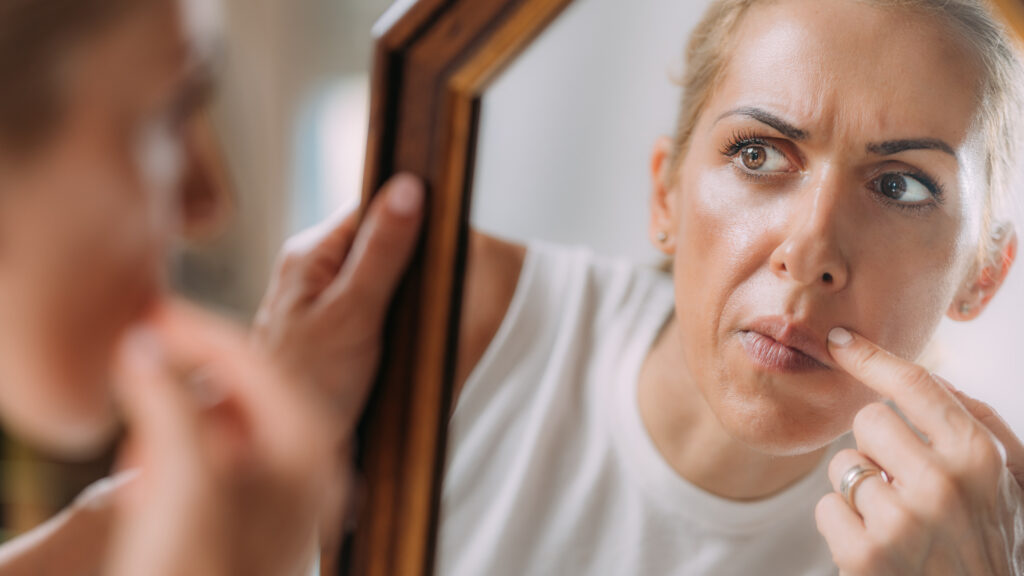Have you ever looked in the mirror and fixated on something others never seem to notice? Maybe it’s a bump on your nose, the texture of your skin, or the shape of your body. For the majority of people, these moments are fleeting. But, for someone with Body Dysmorphic Disorder (BDD), these thoughts can become overwhelming, intrusive, anxiety inducing, and deeply distressing. BDD is a silent disorder, which is only seen by the person it affects and can be an all consuming issue in their day to day lives. Learn more about this often misunderstood condition⎯whether you’re suffering from it or know someone who is⎯its causes, its impact, and how to get help.
What Is Body Dysmorphia?
Body dysmorphic disorder is a mental health condition characterized by an intense, overwhelming preoccupation with perceived flaws in one’s appearance. These “flaws” are often unnoticeable—or even nonexistent to others. Between 5 to 10 million people in the United States have BDD, and some common area people who suffer from it fixate on include:
- Skin—Concerns about acne, scars, wrinkles, or skin texture.
- Nose—Worries about it being too big, crooked, or misshapen.
- Hair—Obsession with thinning hair, hair loss, or perceived bad hair.
- Face shape & features—Concerns about jawline, cheeks, chin, or facial symmetry.
- Eyes—Fixations on size, shape, or perceived puffiness/dark circles.
- Teeth—Worrying about their color, size, or alignment.
- Body size & shape—Even if someone appears thin, they may obsess over areas like the stomach, thighs, or arms.
These obsessions can become all-consuming leading to excessive mirror checking, attempts to hide the area (i.e. wearing large clothes), or even getting unnecessary cosmetic procedures.

What Causes BDD?
BDD doesn’t just appear out of nowhere, but it develops over time due to a mix of psychological, societal, and personal influences. While everyone’s experience is different, these are some of the most common factors can play a role in developing BDD:
Cultural & Social Media Influence
The media inundates us with images of idealized beauty through glossy ads and photoshopped images. These images often promote unattainable standards, potentially reinforcing the idea that we are not “enough” unless we look like the beautiful people in the photos. For people predisposed to BDD, these messages can heighten insecurities, so they obsessively compare themselves to others online and everywhere they go in public. Social media in particular exacerbates this issue, as platforms like Instagram show highly curated, filtered versions of reality and celebrities’ lives.
Personal Experiences
Experiences such as bullying, teasing, or criticism about one’s appearance—especially during formative years can leave long-lasting emotional scars. Due to one or more of these experiences, this creates a hyperawareness of physical imperfections, real or imagined, which can later manifest as BDD.
Neurological & Psychological Factors
Research suggests a connection between BDD and abnormalities in brain functioning, particularly concerning how the brain processes visual information and emotions. Also, individuals with a family history of anxiety, depression, or Obsessive Compulsive Disorder (OCD) may have a higher likelihood of developing BDD.
How Suffering From BDD Can Impact Daily Life
Living with body dysmorphia can feel like carrying an invisible weight because you see what others are telling you isn’t there. Some individuals spend hours fixating on their appearance or attempting to hide perceived flaws under shapewear or makeup. Social events, work meetings, and even basic activities like errands can become overwhelming due to fear of being judged.
Relationships can break down or become strained because loved ones may struggle to understand the intensity of the disorder, causing those suffering to isolate. Many individuals experience depression, anxiety, or even suicidal thoughts as a result of all the negative self-perception. Unfortunately, because BDD is stigmatized or dismissed as vanity, many people don’t seek the help they need.
Effective Therapy For Body Dysmorphic Disorder
BDD may distort how someone sees themselves, but it doesn’t define their worth. With increased awareness, compassion, and the right therapy, those living with BDD can work to free themselves from these obsessive and all consuming thoughts.
If you or someone you care about is struggling with body dysmorphia, reach out to Ashton Powers, LAPC for expert and supportive guidance. You don’t have to face this alone.
